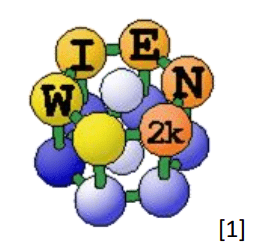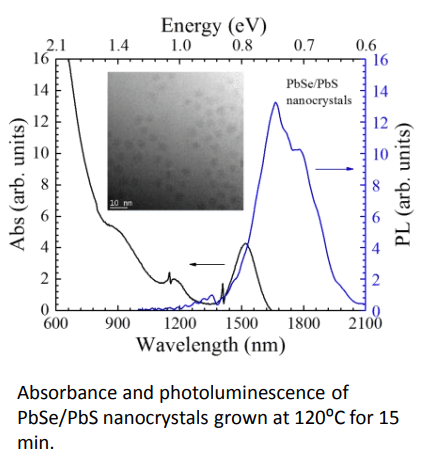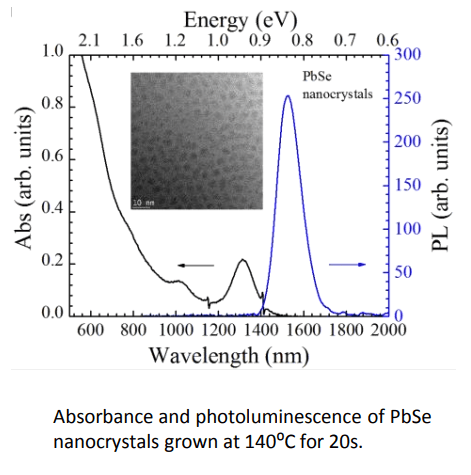Investigation of Optical Properties of PbSe/PbX Core/Shell Nanocrystals
Student: Haley Morris
Degree: M.S., December 2016
Major Professor: Dr. Bothina Hamad
Research Area(s):
Nanoscience & Engineering
Background/Relevance
- PbSe is a useful material for detection in the infrared, but oxidation reduces the functionality of the material in device applications.
Innovation
- Utilize WIEN2k, a program that performs electronic structure calculations, to model PbSe, and PbSe/PbS core/shell nanocrystals.

Approach
- Model PbSe nanocrystals with different shells and of various sizes using WIEN2k.
- Synthesize the material using a wet chemical method.
- Optimize the shell growth procedures.
- Characterize the nanocrystal structures through TEM imaging, absorbance, and photoluminescence measurements.

Key Results
- Modeling PbSe in WIEN2k.
- Successful wet chemical synthesis of PbSe nanocrystals.
- Successful PbSe/PbS core/shell synthesis procedure.
- Absorbance and photoluminescence measurements

Conclusions
- Oxidation of PbSe nanocrystals incorporated into a photodetector degrades the performance of the device, and necessitates a shielding of some sort.
- The PbS shell provides protection for the PbSe core. The addition of the shell also red shifts the absorbance and emission spectra.
Future Work
- Another possible variation is an alloyed shell where the shell is composed of a ratio of lead sulfide and lead selenide, PbSe/PbSexPbS1-x.
